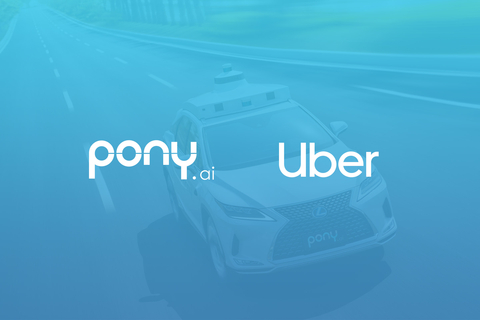Uber is accelerating its transformation into a platform for autonomous mobility through a series of high-profile partnerships announced over the past week. The rideshare giant has unveiled strategic collaborations with autonomous vehicle solution providers Momenta, Pony.ai, and WeRide—each aimed at deploying robotaxi fleets across key international markets beginning in late 2025 and 2026.

Collectively, the partnerships represent a pivotal shift in Uber’s autonomy strategy: rather than owning and developing AV technology in-house, the company is positioning itself as the operating system and logistics backbone for a global network of autonomous fleets. Uber CEO Dara Khosrowshahi summed up the playbook succinctly: “By leveraging Uber’s global scale, operational expertise, and leading marketplace technology, we are thrilled to partner with cutting-edge AV companies… to help them commercialize their vehicles and bring the benefits of autonomy to more riders.”
Uber and Momenta: Starting in Europe, Scaling Globally
The first announcement, made on May 2, detailed Uber’s partnership with Beijing-based Momenta, with plans to deploy autonomous vehicles on Uber’s platform outside of the U.S. and China—beginning in Europe in early 2026. Initial operations will include safety operators onboard, with a goal of scaling to full driverless mode.
“Expanding our network to Uber as the preeminent mobility platform now completes the key ecosystem needed to scale autonomous driving globally,” said Xudong Cao, CEO of Momenta. Known for its dual-track strategy—offering both Mpilot (for L2+/L3 assisted driving) and MSD (full self-driving)—Momenta brings a mature product and proven operational track record across Chinese cities.
Uber’s global footprint combined with Momenta’s AI-first architecture promises to deliver “reliable and affordable autonomous mobility,” according to Khosrowshahi. The European launch, in particular, signals Uber’s growing interest in jurisdictions where AV regulations are accelerating and public-private pilot zones are expanding.
Uber and WeRide: Rapid Expansion Across 15 New Cities
Just days later, on May 5, Uber and WeRide announced an ambitious expansion of their existing collaboration, adding 15 new cities over the next five years to a partnership that already includes Abu Dhabi and Dubai. The deployments will take place entirely outside of the U.S. and China, with Europe expected to play a central role.
WeRide CEO Tony Han emphasized the scale and ambition of the rollout: “Expanding into new cities across multiple continents reflects both companies’ confidence in our technology and our shared commitment to innovative, sustainable transportation solutions.”
WeRide brings a comprehensive AV stack and an integrated vehicle platform—WeRide One—that supports use cases ranging from passenger mobility to logistics and even sanitation. As the first publicly traded robotaxi company, WeRide also holds driverless permits across five countries, giving it a uniquely international regulatory footprint.
According to Uber, this “is one of the biggest partnerships of its kind ever announced,” underscoring a growing belief that cross-border AV commercialization is not only possible but imminent.

Uber and Pony.ai: A Middle East Launch Pad for Scalable Autonomy
Rounding out the trio of announcements, Uber confirmed a new partnership with Pony.ai on May 6, with initial robotaxi deployments launching in a major Middle Eastern market later this year. The rollout will begin with safety operators and evolve to fully autonomous commercial service, echoing the phased approach adopted in Uber’s other AV collaborations.
“At Pony.ai, our vision is to develop autonomous driving technology that is not only safe and reliable but also scalable,” said Dr. James Peng, Pony.ai’s Co-founder and CEO. The company’s seventh-generation AV system is designed for mass production, offering cost-effective and modular integration into fleet vehicles—a key requirement for Uber’s marketplace-driven model.
Khosrowshahi called the agreement “another meaningful step” in Uber’s journey to introduce autonomous mobility at scale. Pony.ai’s tech maturity and international aspirations align well with Uber’s go-to-market capabilities, offering a replicable blueprint for future expansions.
Analysis: Platform-as-a-Service for Autonomy
Together, these partnerships signal a new era in Uber’s autonomous vehicle strategy—one defined less by ownership of the underlying tech and more by orchestration of global fleet operations. Rather than backing a single AV stack, Uber is effectively hedging across multiple top-tier partners, each tailored to different regulatory environments and deployment geographies.
From China to the Middle East to Europe, Uber is laying the groundwork for what could become the world’s most extensive commercial robotaxi network—leveraging partnerships with best-in-class autonomy developers while focusing internally on logistics, customer interface, and marketplace optimization.
If successful, the model offers a powerful glimpse of the next phase in autonomous mobility: fragmented tech ecosystems unified under global operating platforms.

